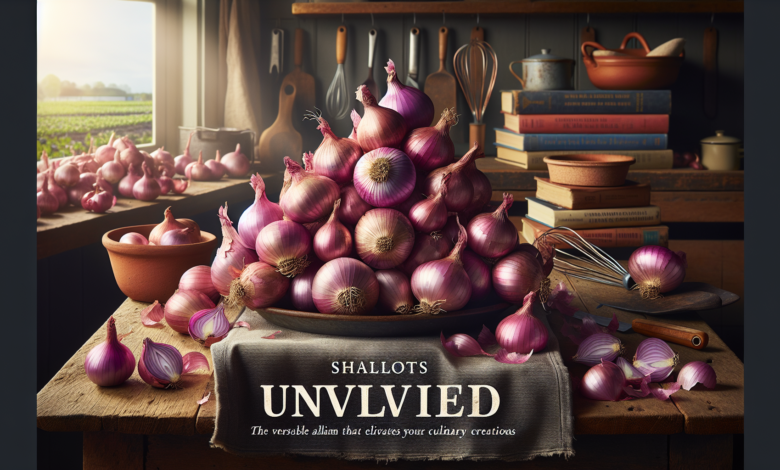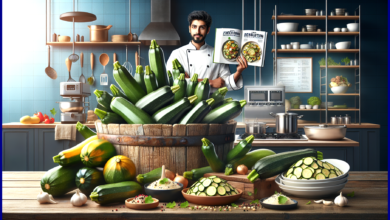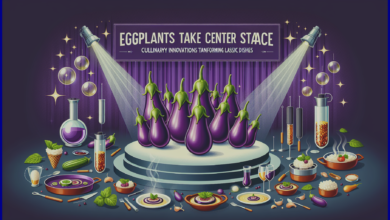Shallots Unveiled: The Versatile Allium That Elevates Your Culinary Creations

Introduction
Ah, shallots! These unassuming little bulbs hailing from the Allium family often get overshadowed by their flashier relatives—garlic and onions—but their culinary prowess is unmatched. As a staple in kitchens across the globe and rapidly gaining traction in the bustling culinary scene of the United States, shallots deserve the spotlight. Nestled within sauté pans, sprinkled in salads, or blended into sauces, they bring depth and nuance to our meals, making them an indispensable ally in the pursuit of a healthy lifestyle.
Description
Originating from Central or Southwest Asia, shallots boast a unique essence—possessing a mild, sweet flavor that dances between onion and garlic, with a slight hint of earthiness. Their papery skin can range from golden-brown to red or even purple, while the flesh reveals a delicate, subtle hue. Unlike their single-bulbed cousins, shallots grow in clusters, a testament to their community spirit. Typically, these fragrant gems thrive in the temperate climate of summer, flourishing in rich, well-drained soil across the United States, especially in states like California, Texas, and New York.
Interestingly, shallots have often danced through the pages of culinary history, embraced in the kitchens of royalty and heralded in French cuisine. They are not merely a flavoring agent; they carry with them the weight of cultural significance and tradition across diverse cuisines. Their versatility allows them to transform mundane dishes into extraordinary experiences.
Health Benefits
Beyond their culinary charm, shallots are a powerhouse of nutrients. Packed with vitamins A, C, and K, they are also rich in essential minerals like manganese and potassium. Their antioxidant properties—primarily derived from quercetin—are heroes in the fight against oxidative stress, potentially lowering the risks of chronic diseases.
Research suggests that the consumption of shallots could support heart health by promoting healthy cholesterol levels and blood circulation. Their high fiber content aids in digestion, encouraging a balanced gut microbiome, making them a commendable ally for those on weight-loss journeys. A myriad of studies underscores their role in combating inflammation, further solidifying their position in the wellness pantheon.
How to Use
Incorporating shallots into your daily meals is as easy as it is delightful. Their mild flavor makes them perfect for savory applications—sautéing them with butter to create a base for soups and sauces enriches dishes with depth. For a refreshing crunch, try adding thinly-sliced shallots to salads or atop grilled vegetables. They can shine in a stir-fry, roasted to caramelized perfection, or even blended into dressings.
Shallots can be enjoyed raw, sautéed, or caramelized, while their flavor profile pairs beautifully with a palette of foods. Think about combining shallots with citrus, herbs, or creamy textures to enhance your culinary creations, elevating even the simplest of dishes into gourmet territory.
Recipes
Simple Shallot Vinaigrette
Ingredients:
- 2 shallots, finely chopped
- 1/4 cup red wine vinegar
- 3/4 cup olive oil
- Salt and pepper to taste
Instructions:
- Whisk together the chopped shallots and red wine vinegar.
- Gradually drizzle in olive oil while whisking until emulsified.
- Season with salt and pepper. Serve over greens or as a dip for fresh veggies.
For those looking to indulge their culinary creativity, myriad more intricate recipes await, showcasing shallots in risottos, braises, and even jam. Seek out opportunities to experiment—your taste buds will thank you!
Quick and Easy Recipes:
Simply toss roasted shallots in with your favorite roasted vegetables, or mix sliced shallots into a fresh bean salad for an immediate flavor boost.
Tips for Buying & Storing
When hunting for the freshest shallots at your local market, look for firm, intact bulbs without blemishes. Their skin should be papery and dry, and ideally, they should feel heavy for their size. To extend their shelf life, store them in a cool, dark, well-ventilated place—think pantry or cellar. Refrigerating them can create mold, but if you’ve sliced into one, wrap it tightly and keep it in the fridge for up to a week. Freezing them is also an option; just chop and store in an airtight container.
Precautions & Considerations
While shallots are generally safe for most people, some individuals may experience sensitivity or allergies to members of the Allium family. As with all foods, moderation is key—overconsumption may lead to digestive discomfort, particularly for those sensitive to high-fiber foods or sulfites. Always listen to your body and consult with a healthcare provider if you have concerns.
Conclusion
In summary, shallots are a treasure trove of flavor and nutrition, worthy of a central place in your kitchen repertoire. Their versatility not only enhances your culinary creations but also supports a healthy lifestyle brimming with nutrients and antioxidants. So, why not add a handful of shallots to your next grocery list? Dive into their flavor, explore their health benefits, and elevate your meals like never before! Join the shallot revolution—your taste buds (and your body) will be grateful.




